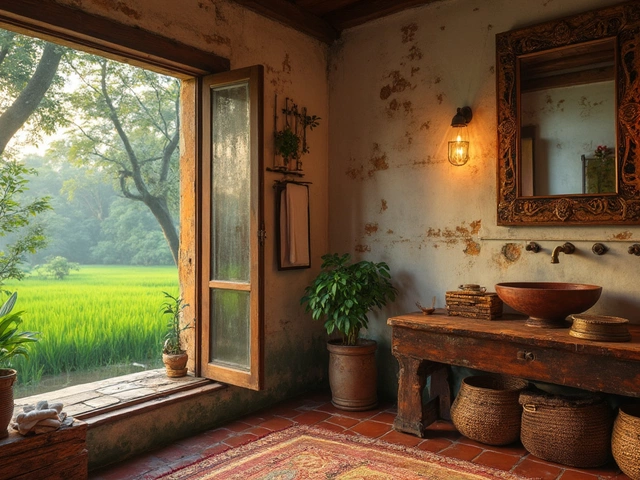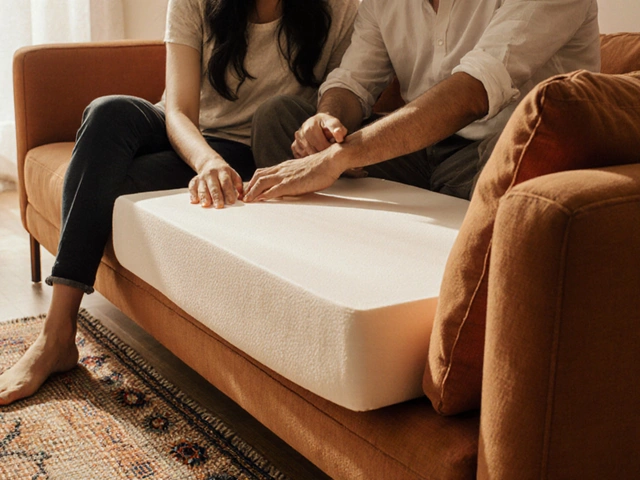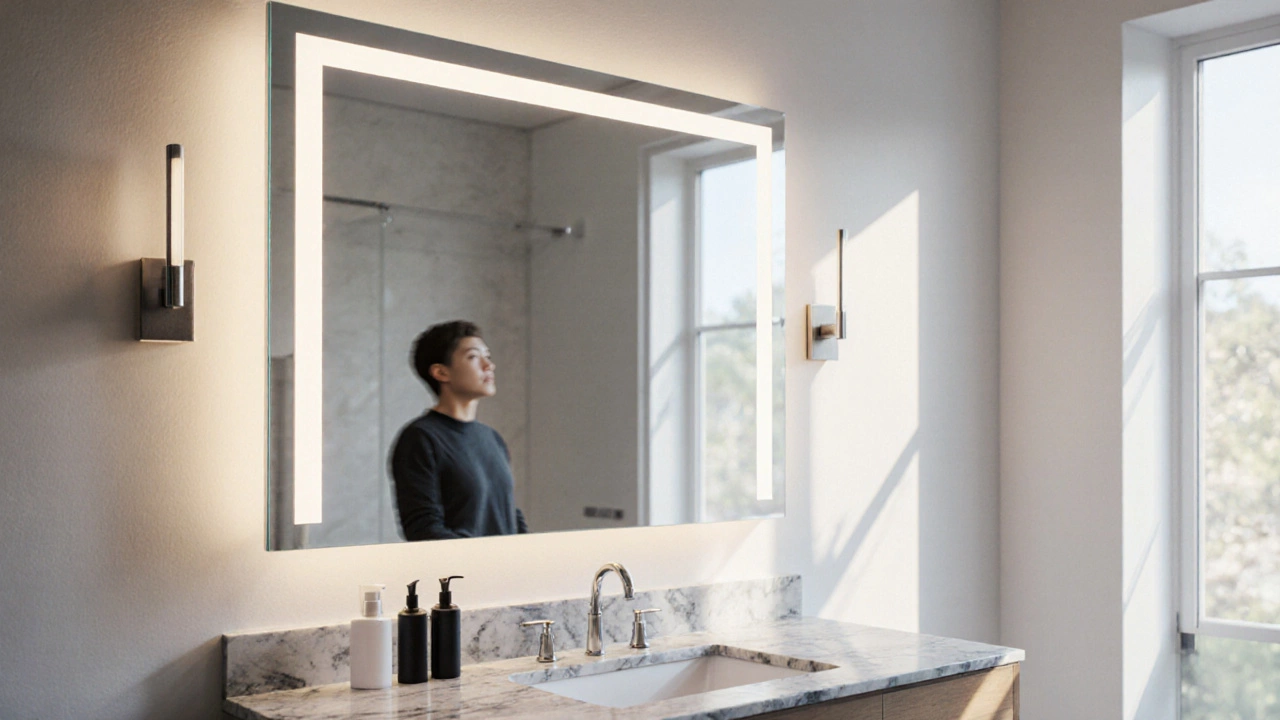
Mirror Size Calculator
Choose Your Room Type
Recommended Mirror Size
How many times have you bought a mirror, hung it up, and felt like it just… didn’t belong? It’s too big. Too small. Too shiny. Too old-fashioned. You didn’t buy a mirror to fix your reflection-you bought it to fix your room. But mirrors don’t just reflect light; they shape space, control mood, and even change how big a room feels. Picking the right one isn’t about style alone. It’s about function, proportion, and placement. Here’s how to get it right the first time.
Start with the room, not the mirror
Don’t walk into a store and pick the prettiest frame. That’s how you end up with a 48-inch round mirror in a narrow hallway. Every room has a purpose, and your mirror should serve it. In a bathroom, you need clear, even lighting and enough surface to see your whole face. In a living room, you want to bounce light and create depth. In a bedroom, you might need full-length visibility for outfits. Know what the mirror is supposed to do before you look at frames.Measure the wall space first. A mirror should never take up more than two-thirds of the wall it’s on. Too big, and it overwhelms. Too small, and it looks like an afterthought. For a standard bathroom vanity, a mirror that’s 70-80% the width of the vanity works best. If your vanity is 48 inches wide, aim for a mirror between 34 and 38 inches. That leaves room for sconces or decor on the sides without crowding.
Size matters more than you think
A mirror that’s too small in a large room feels lost. One that’s too big in a small room feels like a wall you can’t escape. The right size doesn’t just look good-it changes how you move through the space.For a full-length mirror in a bedroom or entryway, go at least 60 inches tall. Anything shorter won’t show your whole outfit. If you’re placing it next to a closet, leave at least 6 inches of space on each side so it doesn’t feel stuck. In a narrow hallway, a tall, narrow mirror (like 12 inches wide by 72 inches tall) can make the space feel longer without taking up visual weight.
Don’t forget height. The center of the mirror should be at eye level for most users-about 57 to 60 inches from the floor. If you’re hanging it above a vanity, place the bottom edge 5 to 10 inches above the sink. That way, you don’t have to bend or crane your neck to see yourself.
Frame or no frame? The real difference
Frames aren’t just decoration. They change how the mirror interacts with the room. A framed mirror adds structure. A frameless one feels modern, clean, and almost invisible.Wood or metal frames bring warmth or industrial edge. A distressed wood frame works in farmhouse or coastal styles. A thin black metal frame fits minimalist or contemporary spaces. But if your walls are busy-patterned wallpaper, textured paint, or lots of art-a frameless mirror can be the calm you need. It disappears into the background and lets the reflection do the talking.
Thick frames can hide imperfect walls or uneven lighting. But if your walls are smooth and your lighting is even, a frameless mirror looks intentional, not like a fix. Frameless mirrors also make small bathrooms feel bigger because there’s no visual border to break the space.
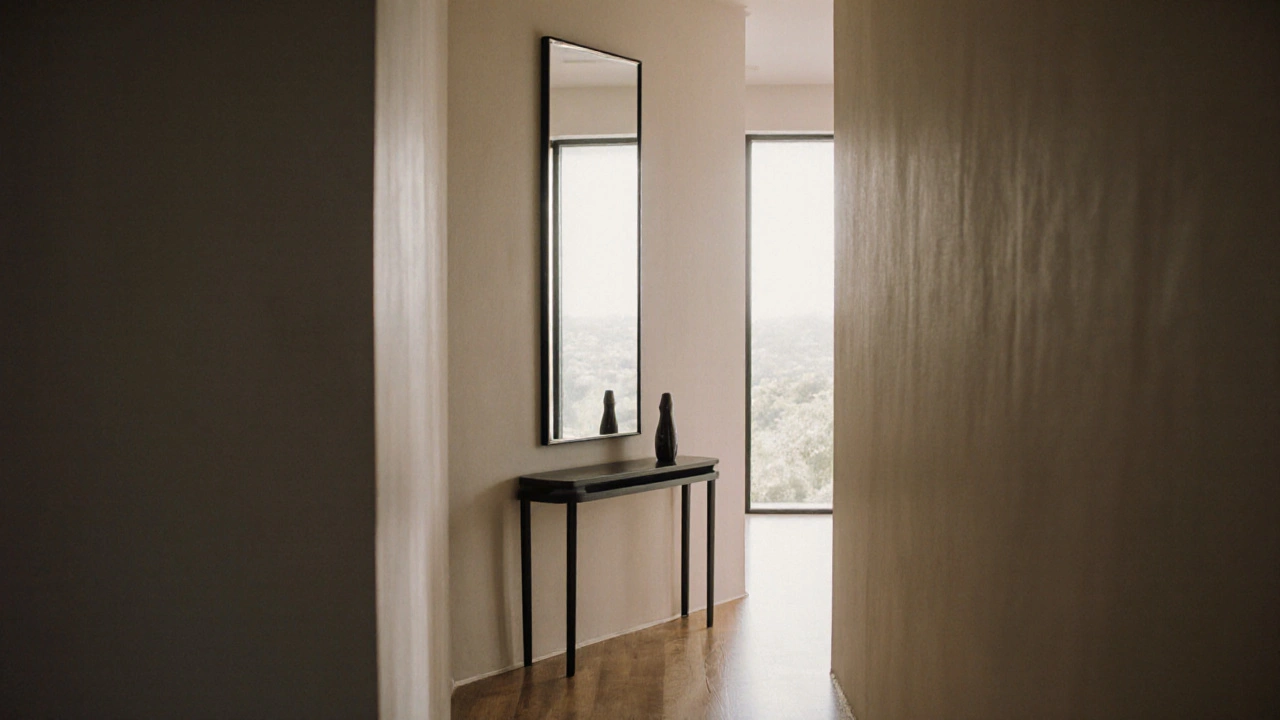
Lighting is part of the mirror
A mirror without good lighting is useless. You can have the most beautiful mirror in the world, but if the light casts shadows on your face, you’ll still hate how you look in it.For bathrooms, vertical lighting on both sides of the mirror is ideal. It eliminates shadows under the eyes, nose, and chin. Avoid overhead lighting alone-it turns your face into a flat, unflattering plane. LED light strips around the edge of a mirror are popular now because they give even, glare-free illumination. Look for bulbs with a color temperature between 2700K and 3000K. That’s warm white, like natural morning light. Avoid cool white (5000K+) unless you’re doing makeup for photos-it makes skin look gray.
Outside the bathroom, mirrors near windows act as light amplifiers. Place one across from a window to bounce daylight deeper into the room. In a dark corner, a large mirror can double the effect of a single lamp. That’s not magic-it’s physics. And it’s why old mansions had mirrors facing windows.
Shape and style: What works where
Round mirrors feel soft and inviting. They’re great for bathrooms, bedrooms, or above a console table in a living room. They soften angular furniture and break up straight lines.Square and rectangular mirrors feel grounded and modern. They pair well with clean-lined furniture and are ideal for above fireplaces, in home offices, or as statement pieces in hallways.
Octagonal or sunburst mirrors? They’re decorative, not functional. They work as art, not as tools for checking your hair. Save them for accent walls where you want personality, not utility.
Don’t match your mirror to your furniture. Match it to your lighting and your wall. A brass-framed mirror looks great next to a white wall and warm lighting. It looks out of place next to chrome fixtures and cool gray paint. Style isn’t about matching-it’s about harmony.
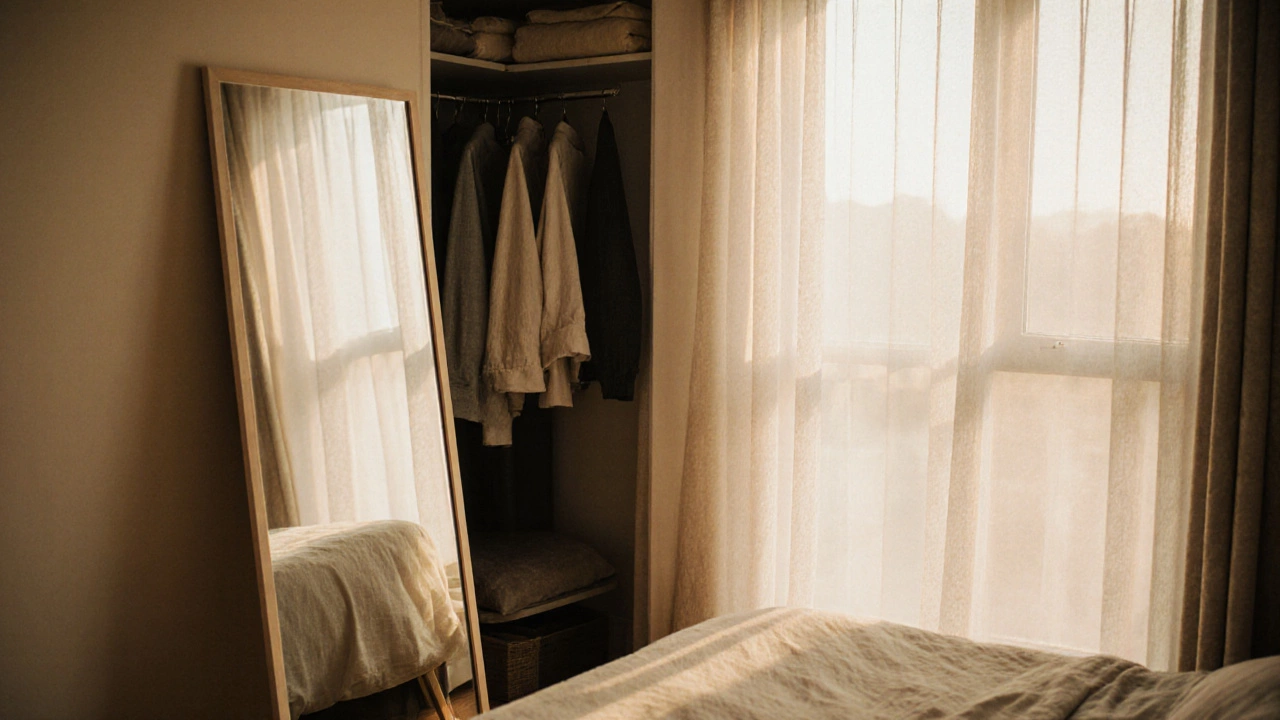
Special cases: Mirrors you can’t ignore
Some mirrors have special rules.Full-length mirrors in small rooms: Use a leaning mirror instead of a hung one. It takes up less wall space and feels more casual. Place it beside a closet or at the end of a bed. A freestanding mirror on a slim stand works better than one bolted to the wall if space is tight.
Decorative mirrors above sofas: Keep it narrow. A mirror wider than the sofa makes the room feel unbalanced. Stick to 60-75% of the sofa’s width. Hang it 6-8 inches above the backrest. Anything higher breaks the visual connection.
Mirrors in children’s rooms: Avoid glass if possible. Use acrylic or safety-backed mirrors. If you must use glass, mount it securely with anti-tip brackets. Kids move fast. Mirrors should never be a hazard.
What to avoid
Here are the most common mistakes people make:- Buying a mirror based on a photo online without measuring your space
- Hanging it too high or too low
- Choosing a frame that clashes with your lighting, not your furniture
- Putting a mirror directly across from a cluttered wall-it just doubles the mess
- Ignoring the quality of the glass. Cheap mirrors have greenish tints and blurry edges
Test a mirror before buying. Stand in front of it. Look at your face from different angles. Does it distort? Does the reflection feel true? A good mirror shows you as you are-not stretched, not dimmed, not tinted.
Final tip: Trust your gut, but measure twice
You’ll know when a mirror feels right. It’s not about trends. It’s about how it makes the room feel. Does it open up the space? Does it make the light better? Do you actually want to look at yourself in it?Take a piece of paper the size of the mirror you’re considering. Tape it to the wall. Live with it for a day. Move around the room. See how it changes the way you move through the space. If you forget it’s there-then you’ve chosen well.
How do I know what size mirror to buy for my bathroom?
Measure the width of your vanity. Choose a mirror that’s 70 to 80% of that width. For a 48-inch vanity, go with a 34- to 38-inch mirror. The bottom edge should sit 5 to 10 inches above the sink, and the center of the mirror should be at eye level-around 57 to 60 inches from the floor.
Should I get a framed or frameless mirror?
Framed mirrors add style and hide imperfect walls. Frameless mirrors look sleek and make small spaces feel larger. If your walls are clean and your lighting is even, go frameless. If your walls are textured or your room feels busy, a frame adds balance.
Can a mirror make a room look bigger?
Yes, if placed correctly. Hang a large mirror across from a window to reflect natural light. In narrow rooms, use a tall, narrow mirror to create the illusion of depth. Avoid placing mirrors across from clutter-they just double the mess.
What type of lighting works best with mirrors?
Vertical lighting on both sides of the mirror gives the most even illumination, especially for bathrooms. Use LED strips or wall sconces with warm white bulbs (2700K-3000K). Avoid overhead lights alone-they create harsh shadows.
Is it okay to put a mirror in a bedroom?
Absolutely. A full-length mirror beside the closet or at the foot of the bed is practical. Avoid placing it directly across from the bed if you find it distracting. Use a leaning mirror for a softer look in small bedrooms.

